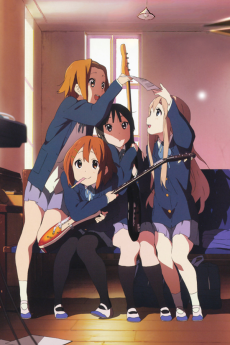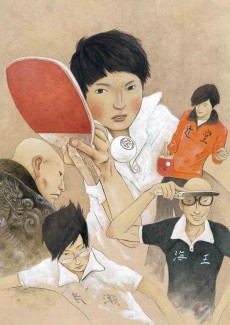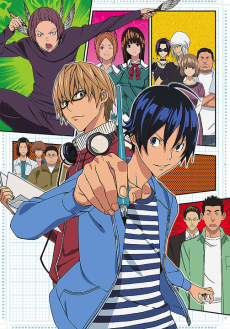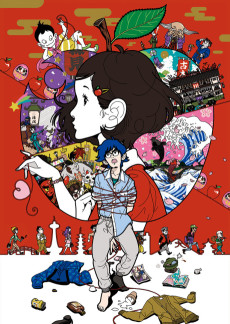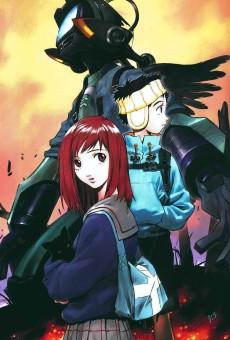EIZOUKEN NI WA TE WO DASU NA!
STATUS
COMPLETE
EPISODES
12
RELEASE
March 23, 2020
LENGTH
25 min
DESCRIPTION
First year high schooler Midori Asakusa loves anime so much, she insists that "concept is everything" in animation. Though she draws a variety of ideas in her sketchbook, she hasn't taken the first step to creating anime, insisting that she can't do it alone. The producer-type Sayaka Kanamori is the first to notice Asakusa's genius. Then, when it becomes clear that their classmate, charismatic fashion model Tsubame Mizusaki, really wants to be an animator, they create an animation club to realize the "ultimate world" that exists in their minds.
(Source: Crunchyroll)
CAST

Sayaka Kanamori
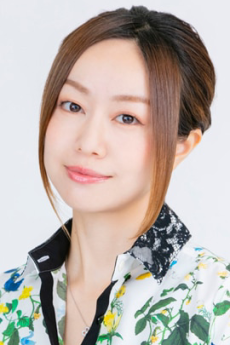
Mutsumi Tamura
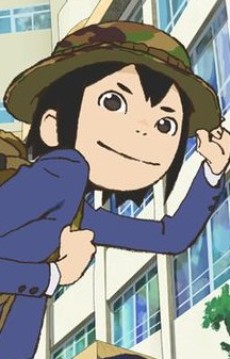
Midori Asakusa
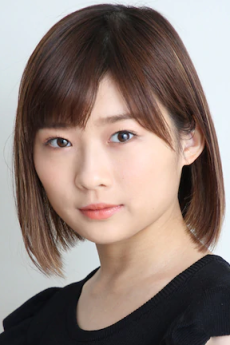
Sairi Itou
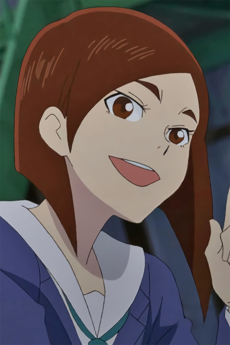
Tsubame Mizusaki
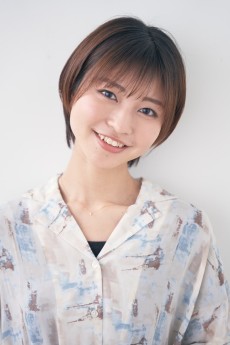
Misato Matsuoka
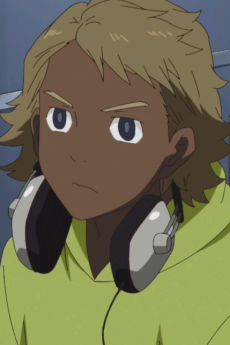
Parker Doumeki
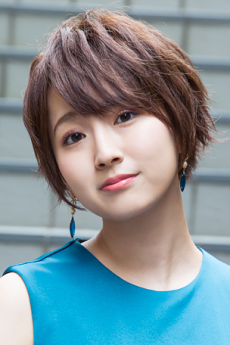
Yumiri Hanamori
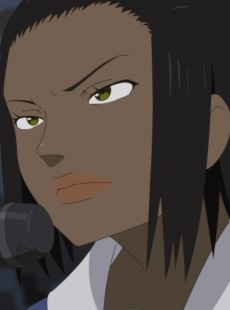
Sowande Sakaki
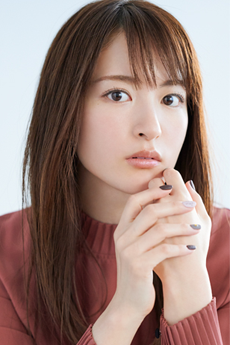
Mikako Komatsu
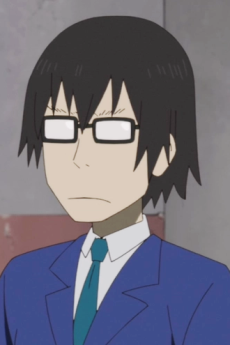
Ono
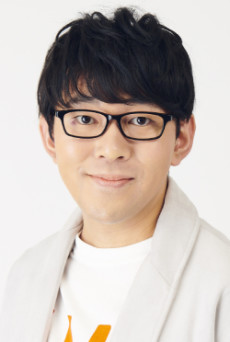
Yuuki Ono
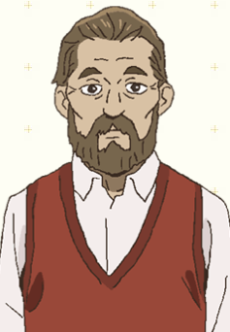
Fujimoto Sensei
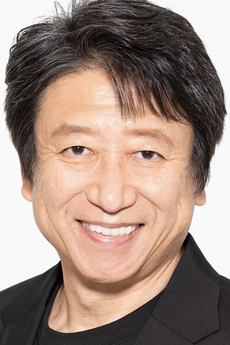
Kazuhiko Inoue
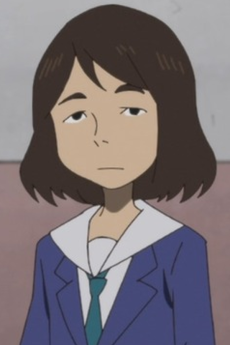
Seki

Shiori Izawa
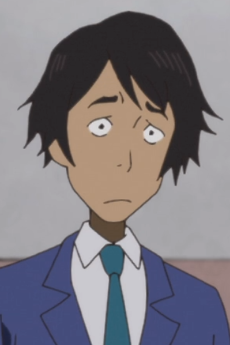
Kobayashi
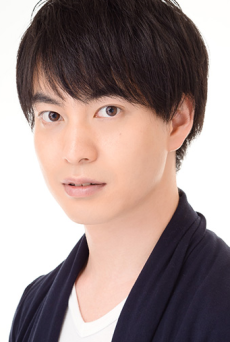
Yuusuke Kobayashi

Kubo
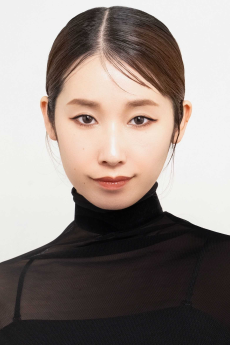
Michiyo Murase
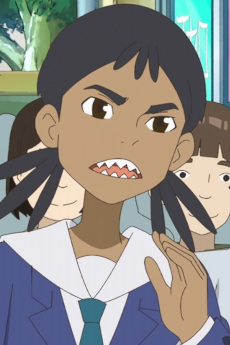
Kyuu Ajima

Hiroko Kiso
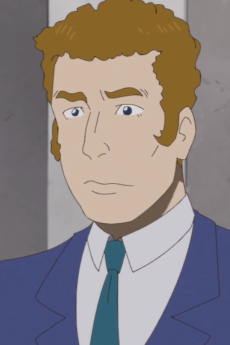
Goto

Ryuunosuke Watanuki
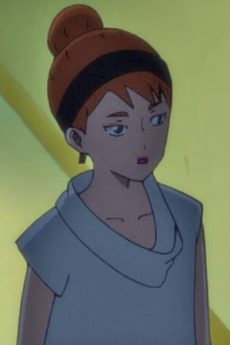
Tsubame no Haha
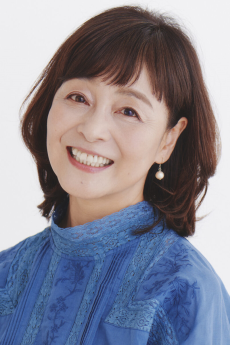
Noriko Hidaka
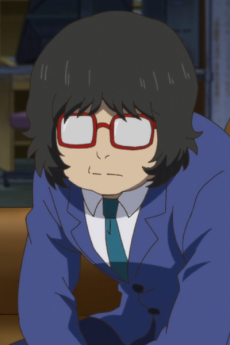
Nakamura

Yuusuke Tezuka
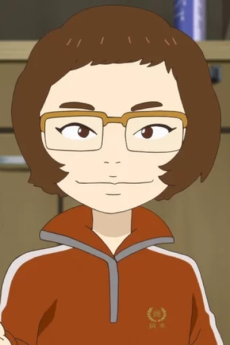
Okamoto

Reiko Takagi
EPISODES
Dubbed
RELATED TO EIZOUKEN NI WA TE WO DASU NA!
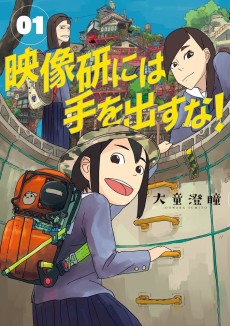 MANGA AdventureEizouken ni wa Te wo Dasu na!
MANGA AdventureEizouken ni wa Te wo Dasu na!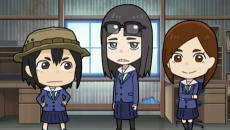 ONA ComedyEizouken Mini Anime
ONA ComedyEizouken Mini AnimeREVIEWS

CodeBlazeFate
82/100There’s so much love and passion for the medium oozing out of Eizouken, and it’s hard not to get invested.Continue on AniListAnimation is a wonderful medium, isn’t it? The way drawings get put into a consecutive illusion of motion, combining all sorts of aspects of art and color to create spectacles that inspire others to do the same. That’s the power of visual media: creative inspiration. You can look at all sorts of auteurs and visionaries such as Quentin Tarantino and Hideaki Anno, and they’ll tell you their inspirations: anime, movies, tokusatsu productions, etc. It’s the origin story of most in all creative industries. Creativity begets creativity, so it’s all the more wonderful to see works that celebrate it. 2014’s Shirobako was a charming and immersive look into the anime industry from the perspective of 5 friends working in different aspects of that field. 2017’s Re:Creators brought all sorts of fictional creations to the real world to showcase the many sides of what writers and authors are capable of as well as what kinds of influences and intentions their works hold. Now that we’re in the year of our lord 2020, Keep Your Hands off Eizouken provides a charming look at 3 passionate high school girls in different production roles of animation, and how they work with each other to create their own anime.
It’s gonna be difficult not to gush about this show on a level that most of its main characters do, so pardon me. The energy of this show radiates a level of autistic CBF energy I adore to no end as its passion and charm breathe life into me. The eccentric, high-energy nature of Midori Azakusa and Tsubame Mizukashi is precious with how they gush about the technical aspects of animation. Their chemistry with each other and resident penny-pincher and schemer Sayaka Kanamori is a sight to behold. Their no-chill energy might be a bit much for some people, but they alone could be fun in almost any scenario, as the anime shows us. The way they gush over animation techniques and still make it presentable, the way they come up with ideas like a moving logo akin to the Pixar lamp, the way the three casually interact with a mix of hyper and deadpan energy, all make my mind race at a thousand miles per hour! I love how they have to keep thinking about believability in their fantasy before making concessions. I love the theatric air they sometimes put on in their declarations. The show is just a joyous bundle of joy, one with a lot of comedic value such as them praying to the fallen comrade of 30K yen or what comes of filming Azakusa falling off guard rails on the second floor of a building. It also tackles a robot anime while having the characters balance the unrealistic nature of the genre in general with a level of plausibility, coolness, and internal logic in a way meant to harken back to the appeal of mecha in the first place. Needless to say, the mere concept of the arc excited me, and bias aside, the execution delivered!
There are some problems with the show’s pacing. While the arc structure is generally solid, the episodes themselves can feel almost lackadaisical, as if we’re just flowing or cutting from one scene to another with little in the way of escalation. Episode 11 is probably the biggest offender of this, as it ends up feeling a lot longer than it actually is as a result. There are a few examples of episodes that also can’t figure out a good stopping point, either. It’s not the biggest issue in the world, and it being more of a slice of life title does help excuse it a little, but it’s still a problem that exists.
One can argue that these characters aren’t especially layered or complex compared to some of other Yuasa titles such as Ping Pong: The Animation. As true as that is, it might be missing the point as a criticism of Eizouken’s writing. These characters are essentially vectors for this passion for animation that this somewhat dramatic slice of life-esque title presents. On top of that, while one can argue how similar Azakusa and Mizukashi are to the point of being as similar as Carole and Tuesday (from the eponymous disappointment of 2019) are in terms of characterization, they at least have incredible chemistry with one another and with Hinamori. Frankly, this dynamic of friendship is what sells the trio for me, as it’s fun to see them not just talk about the medium or about cash, but about anything else as they just have fun with whatever they’re doing. Azakusa’s definitely a ball of energy who gets too carried away with herself, but one who is otherwise laid-back and socially awkward. Mizukashi’s similarly energetic about a different part of animation --hence the two coming off as similar at times-- but she’s an incredibly sheltered girl at the end of the day, and one who just wants to follow her passions. Hinamori is the tough girl of the bunch, as she’s a schemer always on the hunt for money, and a deadpan hardass to boot. They’re not the most fleshed-out or interesting personalities in the world, but for what they are, the show takes advantage of them and explores their dynamics well. It’s also amusing to see all the little sound effects characters make and that Azakusa is capable of nitpicking and breaking down the believability of settings and ideas in anime, though that’s the aspie and reviewer in me talking, respectively.
The show also takes advantage of how painful being an animator can be. The girls working for free is made for a morbidly humorous comparison to the low wages animators work for. Cuts take absolutely forever and require absurd lengths of time to complete as animators work for what feels like nonstop. Understanding realistic or plausible physics of whatever an animator is shooting for can be downright aggravating, like with smoke, sword movements, or hair movements. Several concessions often end up having to be made for the sake of getting a work of animation done in time, resulting in cost-cutting measures that can look cheap if desperate enough. An example of this is when the characters talk about how to convey the fast movement of a tank rolling around, and they discuss the idea of a background with moving highlights before Mizukashi rightfully calls out how much she hates the technique and they find a better solution. If Shirobako takes a somewhat lighthearted approach to what troubled production looks like, Eizouken does the same regarding the grueling nature of working as an animator, even on freelance projects not commissioned by anyone but themselves.
I’m also intrigued by the strange, sci-fi school setting. We always see new bits being fleshed out with each episode like how clubs work or what getting lunch is like over there. Student council students are a level of hardass even Kanamori has trouble keeping up with, and club presentations can reach a level of violence where armored guards are forced to step in to protect club members with shitty presentations from getting trampled and beaten. The school itself is this strange hodgepodge of inconsistent elements in its design, as Azakusa points out in the first episode. It’s a chaotic mess that vaguely resembles the real world while having the grandiose and almost bloodthirsty attitude present in say, Kill la Kill’s Honnouji Academy. There’s also this semblance of reality and fiction melting together much like Satoshi Kon’s filmography, as the overactive imagination of characters physically transports them into whatever they’re visually brainstorming or whatever gets shown on-screen. The level of immersion characters reach gets to a point where they react and interact with what isn’t even there.
Then again, with how great the visuals are, hard not to gush about and get immersed in them as much as the characters do. Masaaki Yuasa and his team at Science SARU do a beautiful job of taking the strange and creative world of the manga and bringing it to life. The absurd and extremely emotive facial expressions characters have all of the time are all amusing and ever-shifting. The character designs all feel distinct from one another with different head proportions that still feel grounded in the same world. The colors all pop while still feeling somewhat cool, almost akin to Tokyo Godfathers. This is most exemplified by the drawings the characters make, which radiate this endless, unbound youthful energy to them. Of course, where the show tries to flex its muscles the most outside of its character animation is when the characters immerse themselves in a setting. The beautifully unfinished setting models are just adorable, as pencil marks remain on models that haven’t been fully colored. It captures the setting and design sketching phase beautifully, and it does so while keeping the models consistent. It’s fun to see how the outfits our characters wear change in response to these scenes, and models such as the dragonfly plane sketch our characters envision themselves piloting in episode 1 make for the best use of 3D CGI in a 2D anime I have noted in years. Of course, the level of detail in the animation itself is impressive in terms of fluidity, about as much as when the show tries to recreate Future Boy Conan, one of Asakusa’s favorite shows. The way she gushes over the physicality of the characters’ movements and other aspects of animation are represented perfectly in this recreation of an anime classic. This is all just gushing about episode 1! I haven’t talked about a single thing about the rest of the show’s visuals, the stellar animation showcases that make up the climax of each arc, or about the vibrance present in the OP and ED. That should tell you just how visually stunning the show is, and I didn’t even talk about my favorite moment from the first episode.
There are several gorgeous scenes thanks to Masaaki Yuasa’s directing as well as due to lovely art direction that works perfectly with the strange school setting our characters find themselves in. Perhaps nothing is quite as artsy as say, Berserk 1997’s shots, but there are still gorgeous moments such as the space scene at the end of the big imagination setpiece of episode 1. Sunsets are as warm as they can be without ever feeling plain like most other anime, and the CG water somehow looks both photorealistic and capable of usually blending in with the environment of the show. It doesn’t always work out and there are a few awkward CG moments, but this is still a joy to look at. There are other details, such as at the end of episode 2 when Azakusa and her family are shocked at a video of her falling that got filmed earlier in the episode. She’s so embarrassed that she’s literally malformed and shittily drawn compared to everyone else in the shot. A lot of the techniques and explanations this show employs get nice visual representations as well. I’m not entirely sure if this is my favorite Yuasa work from a visual perspective, but it is certainly one of the best in this regard. Not every episode quite lives up to episode 1, as there are a few CG problems and several moments that do admittedly look plain. This is to be expected from a contemporary anime production, and what they get away with on a regular basis is still vibrant and imaginative enough to properly convey and live up to the intricacies of the medium it puts on display. The series captures this overactive imagination that I envision every day given that I often think visually, and I love that.
As you can tell, this show is hyper and that energy has rubbed off on me.
If I had to find the weakest link, it would be the OST. This is the first anime OST done by Oorutaichi, and while it fits the setting and vibe of the show rather well, little of it is particularly memorable. The show also overuses certain tracks, as if there is one specific piece meant to be used every time the characters go into their visually-driven imagination setpieces. That said, I did notice how each arc of the show introduces new tracks, all of which are nice enough. I also like the brash and peppy energy presented by the OP, “Easy Breezy” by chelmico. The visuals of the OP have been memed to death thanks to the Drake-inspired dance moves the girls show off, but the song itself is still what I like most about it, though it isn’t especially remarkable. I’m less fond of the ED so that’s all I’ll say about it.
It’s hard to avoid spilling everything I love about the show and what it tackles in detail. This review needs to maintain a level of coherence, after all. The show isn’t this 10/10 hype beast that I adore from beginning to end, but it resonates with me on a level that makes it difficult to get bored or find much to complain about. I didn’t even get to touch on the main conflicts much like with how beautifully and earnestly Mizukashi’s conflict with her actor parents concludes, or go into scenes like when the characters travel to a location for inspiration. The final arc involves the show’s understanding of social media marketing and how star-power gets many interested in a studio’s body of work so that the more invested can follow it thoroughly and deep-dive their catalog. I also never got to talk about the decent supporting cast and how interesting the scenes where they and our main trio come to an understanding are. Barring minor contrivances, everything feels natural rather than forced. All of the conflicts and interactions have this genuineness to their execution.
There’s so much love and passion for the medium oozing out of Eizouken, and it’s hard not to get invested. Sure, the high-energy nature and how specialized it is in this field can turn some away, but it’s hard not to appreciate just how much about anime the series covers. Its heart isn’t just with animation, as the show has a few beautiful character moments and emotional climaxes of its own. The likable characters and wonderful visuals accentuate the joyful feeling of this show and how much it cares about what it covers. The show does not shy away from the darker and more complicated aspects of being an animator, even though it doesn’t dwell on the grim nature of it all. Eizouken’s simply a treat to watch, and certainly a contender for anime of the year moving forward. It understands, and that’s what allows it to shine so brightly.

planetJane
97/100Don't Mess With The Motion Picture Club!Continue on AniListAll of my reviews contain __spoilers __for the reviewed material. This is your only warning.
You could just kind of tell from day one with Eizouken. It was the kind of thing that almost everyone seemed to agree was worth watching, a rare moment of the popular zeitgeist lining up with a show that’s expertly-crafted, incredibly interesting, and written straight from the heart. It’s rare for this many people to agree on anything in an anime fan community that is increasingly fractious and divided.

Popular rumor states director Masaaki Yuasa found the manga by having it brought to his attention on Twitter, with fans saying he should adapt it. Those people (if the story is true) are heroes, but the idea that there was an Eizouken before the anime adaptation can feel a little strange given its heavy emphasis on anime as an artform. Indeed, it doesn’t really feel like part of the general anime seasonal cycle at all, though most of Yuasa’s work can be said to have that same quality. Being tasked with summing up Eizouken in an interesting and concise way feels like being told to write something new about those anime that have just kind of always been there. Your Ghibli movies and your Evangelions.

Yet ultimately that feeling is something of an illusion. Eizouken is very much an anime of the new 20s and its consciousness of its own medium aside, it is, factually, a product of the manga-to-anime process that defines much of the industry, and some of what makes it good has more to do with that than one might assume. As such, here we are, a few months later, audience appraising the artist and their art, same as always.
But there is a little more to it than that. Criticism is piggyback expression. You are writing about someone else’s art. If we take that to be true, there must be some chain effect involved in reviewing an anime about making anime adapted from a manga about the same--effectively one person appraising someone interpreting art about making art. If you’re feeling slightly dizzy, please know we’re only just getting started.
Eizouken’s core premise is so simple it needs no introduction. Three friends. High school. Anime club. Making, not watching. That’s about the long and short of Eizouken’s actual setup. It’s easy to lose sight of this, but for everything it does that’s innovative or draws from well outside this plane, Eizouken is at its heart a school life series. It takes that simple core premise and turns it into a dual thesis; On one hand, on what it feels like to express yourself creatively and to be inspired to make that leap to expression in the first place. On the other; a look at the vast diversity of people and what motivates us to do what we do. That’s quite a lot for three high school girls to carry on their shoulders on its own. That it also gets into the nitty-gritty of how to make those dreams a reality is something else entirely. That it then also manages to be nuanced enough to not lose sight of the fact that there are a billion and one different approaches and reasons for making art, and that all of them are valid in their own way, is nothing short of astounding.
Anime about anime aren’t actually a recent development, but they can sometimes feel like one. It’s a piece of subject matter that’s seen something of an uptick in recent years. Both in series that actually tackle anime production (this one, Shirobako) and shows where anime and the real world intersect somehow (Re:Creators, Anime-Gataris). What Eizouken gets right from the jump is that wanting to make an anime is not exactly a rational thing.

Two of our leads; the short, kappaesque Midori Asakusa, and the teenage model Tsubame Mizusaki, are ultimately driven purely by passion. Midori is a talented background artist and director and Tsubame a prodigal character animator. What, or rather who, actually makes the two able to work together to productive ends is the show’s third protagonist, Sayaka Kanamori. Tall with tombstone teeth, a generally intimidating demeanor, and in sharp contrast to our other two leads, a head passionately and almost exclusively for finance. Kanamori is both the group’s glue and arguably, the show’s. Since she’s so different from the other two characters it’s through her that the series can present very different ideas of what it means to make art and sell it. It would’ve been easy to paint her as an antagonist, but Kanamori is never depicted as anything less than necessary for the continued function of the Eizouken itself.

Of course, Asakusa and Mizusaki are pretty different from each other too. In the show’s middle we explore Mizusaki’s passion not for anime specifically but for animation as a concept. Her background as a model and child actress leads to a lifelong obsession with motion. We see her as a child become fascinated with the way her grandmother tosses excess tea onto the grass outside and try to replicate it. Later, the cut of her grandmother doing that is echoed in one of Mizusaki’s own cuts in one of the Eizouken’s shorts. Saying that Eizouken has passion for its medium is not enough; the series integrates its own characters’ passions into the narratives they make, and its creators’ passions into Eizouken, thereby layering itself. We see, in this repetition, the inherent artistry of Mizusaki’s grandmother’s motion, Mizusaki’s own fascination with that motion, and, crucially, the skill and passion of the real world animator--Shuuto Enomoto--as well.
Weaving its characters’ and creators’ own passions into the visuals is one thing, but Eizouken’s strong character writing shouldn’t be ignored either. It’s cheap to say that none of the characters here feel like familiar archetypes, but they genuinely don’t. Kanamori for instance has what initially seems like a quirk--her money-first attitude--explained pretty readily by her backstory. We learn about halfway through the series that her grandparents’ liquor store closed due to a lack of visibility when she was younger. It’d be easy for Eizouken to milk this for drama, but Kanamori’s experiences shaping her character is taken as a simple fact of life. We are, indeed, all shaped by our experiences--another message the show pushes pretty hard.

The contrast between this approach and the one often used by big-ticket manga adaptations is sharp, but it’s easy to take for granted. This in fact is the part of the series that draws most heavily on Sumito Oowara’s original manga. Good writing can transcend the constraints of its format, and in keeping that element, the anime retains a strong emotional core. In turn, this is what makes the show’s exploration of the creative impulse and celebration of diverse experiences feel resonant. Every part of the series is bursting with life in that same way.
There’s nuance here too. Kanamori’s conflicts with the student council and the school itself, and a discussion in the final episode about how peoples’ sharp differences of opinion can cause conflict aren’t just window dressing or bet-hedging. The show does acknowledge that earnest expression--which is ultimately what unites both halves of its core point--can be hard.

The show has a lot of impressive visual tricks, but this one, with almost every controversial subject under the sun depicted as part of a literal torrential downpour, might be the most purely clever.
However, the fruits of the Eizouken Club’s labor prove that it can also be worthwhile. And that, right there, is what ropes Eizouken back into the circle of broader anime discussions. The difficulty but necessity of communication is of course a popular theme for art in general, but in a certain sort of anime it has found a particularly fertile place to bloom. You can draw broad thematic lines from here to things as otherwise wildly different from each other (and Eizouken) as Symphogear and A Place Further Than The Universe.
The show ends with one of the Eizouken’s own shorts playing in its entirety. An 11 minute student film about a war between land-bound humanity and sea-dwelling kappas. A war that occurs, in-film, because of a lack of communication. Not exactly subtle, is it?

But subtlety is perhaps overrated. Eizouken is a lot more than just an “anime about anime”. It’s a celebration of the vast diversity of the human experience, arguably the thing that makes us human in the first place. If that message speaks to enough people--and I believe it has--we can stop beating around the bush and just call Eizouken what it is; the first truly great anime of the 2020s. Or, more poetically; the future.


Lenlo
90/100A brilliant adaptation where you can feel Masaki Yuasa and Science SARU's passion in every sceneContinue on AniList
It’s not often an adaptation suits a Director as perfectly as Keep Your Hands Off Eizouken suits Masaki Yuasa. Of course you have works like Gen Urobuchi’s Puella Magi Madoka Magica or Satoshi Kon’s Paranoia Agent. Yet those works were originals, dreamed and created from the ground up by the directors for the anime. Yet here we have someone else’s manga, their work, fitting together perfectly with a renowned industry veteran. Everything from the narrative to the visual aesthetic of the series seem tailor made for him. The highly detailed backgrounds and setting to the rough character designs. The subject material and focus on animation itself to Yuasa’s own life experience in the industry. It’s an aligning of the stars that oh so rarely happens, yet when it does we get something amazing. And that’s what we got this season with Eizouken. Let’s dive in.
(Disclaimer: This review contains minor spoilers for Keep Your Hands Off Eizouken. I am also working to make 50 the new "average". 70 is not an average score people. 70 is above average. You can also find individual episode write ups and comment on this review on my Star Crossed blog. Carry on.)

Art/Animation As always, I want to begin with Eizouken’s art and animation. There is a lot to talk about here, from its variety of styles to how the presentation informs the story. For the sake of clarity, I am going to leave the more meta aspects for later in the review. Focusing entirely on the technical stuff for now. And let me tell you, the technical stuff is pretty damn fantastic. From the rough, seemingly incomplete sequences from Kai Ikarashi, Hakuyu Go and Atsuko Nozaki to the beautiful character work of Shuuto Enomoto and Nick Mckergow. The passion of these animators is infectious to me. And the best part of it all in my mind is how they work in just the right amount of jank. Keeping them professional while still managing to present the cuts as if they were made by our lead characters.
As for the characters themselves, I find their designs and style to be very appealing. Eizouken itself explains this in the story at one point, but their simplicity makes them incredibly expressive. With each of their faces, eyes, noses and mouths being clearly different. Meanwhile there is a clear delineation in their heights and body types. Allowing the viewer to tell who is who at a glance, far before you actually start to take in any details. It’s as if each of the three leads has their own little microcosm of visual stylings. Kanamori consisting of straighter, more rigid lines such as her mouth, while Asakusa is much more rounded like a ball. This isn’t a hard and fast rule throughout its run time, but I feel it helps express each characters personality well before they even speak.
This leads me to the variety of styles that we see throughout Eizouken and the clear lines between them. What I mean is, Eizouken switches art styles on the fly to fit the context of the scene. Both its regular, fully colored and detailed story with simple but expressive character designs to the looser more imaginary ones are very appealing. In particular I always enjoy the storyboarded, as if it was colored with a marker, worlds of the girls imagination. Clearly delineating reality from make-believe while providing a great excuse for these fantastical backdrops. Meanwhile as I said before there is just the right amount of jank and “incompleteness” in these scenes to inform the viewer that the characters are still working through them. It’s a brilliant visual motif, I feel, that I will definitely go into more depth in later on in this review.
All in all, while Eizouken’s production isn’t the most impressive or flashiest thing this season, it is my favorite. The set pieces are grand, yet fitting. The variety in styles is both engaging and interesting as it informs each new scene with each new style. I could go on and on about individual episodes or how Eizouken uses the medium both to inform the viewer technically while showing it off in the moment. However I will save that for the end. As an anime, Eizouken feels wholly unique this season visually. And while no amount of credit is to much for the series original creator Sumito Oowara, Yuasa’s influence cannot be understated either. Where one has created these designs and this world, the other has given them beautiful life, filled with expressive motion. And dear god, do I want more.

Direction Next up we come to Eizouken’s direction, which is just as responsible as its animation for its visual quality. From the clever use of CGI environments to the variety of styles and decisions on when to use complete animation, etc. Even simple things like shot composition help Eizouken stand out amongst the chaff. As Yuasa positions shots in recurrening ways, like the close zooms on Asakusa’s face, so we can see her progression as the story goes along. My favorite examples of Yuasa’s directing here is actually the make-believe/imaginary environments and how he uses his resources. Applying CGI backdrops with the marker/watercolor style, where it won’t be out of place, to both save money and make them feel different. Yet he doesn’t just stop there, he actually makes use of the environment for some sweeping camera moves as well. Turning corners and the like. I love it.
That said, it’s actually really difficult to critique Eizouken’s direction because of how solid it is. I don’t have a film degree, i’m an amateur anime critic who writes these in his free time. It’s always going to be easier for an amateur to critique something bad than something good. Something bad is bad in obvious ways. Whether it be over-using dutch angles, breaking the 180 degree rule or just having terrible shot composition. These things stand out. But good direction is often much more difficult, as it accomplishes its job without screaming it to the rooftops. Especially in anime, where a fancy camera move or scene is just as much a product of its animation as it is the direction. So suffice to say, while this section is short, it’s not due to a lack of effort on Eizouken’s part. Simply me not knowing how to talk about it.

Setting/Story This leads me to Eizouken’s story, which while simple, I love for that simplicity. The easiest way for me to describe Eizouken is like an anime version of Ed Edd n Eddy. Three friends hanging out in their town with a dysfunctional and exaggerated cast alongside them. While more structured than Ed Edd n Eddy, Eizouken follows this same basic format, where the real drivers are our lead 3 characters as they try to make anime. This might lead you to believe that the individual story arcs aren’t that complex or deep, and you be partly correct. Afterall the true value of these arcs comes from the characters, and we will talk about them later. But I think that ignores a large part of Eizouken’s charm, and that being how it relates to the reality of being an animator. The reality of starting and running a studio.
It’s part of why I think Eizouken meshes so well with Yuasa, who started his own studio in Science SARU. Him and his team are able to pour their passion and experiences into Eizouken’s story. Taking what could only do so much in manga form, and giving it that spark of talking about animation in anime. As throughout Eizouken’s story our leads have to deal with the realities of running a studio. It asks them the question of what do you do when you run out of time, but aren’t happy with the product? Where do you find the passion when you are creating someone else’s creative idea? Eizouken even manages to dip it’s toe into the business side of things, with how much money their work hours are worth. How difficult it is to just break even on projects that take hundreds of hours to complete.
A specific example of this, and perhaps my personal favorite arc, is that of the Robot Club. Not only is this the first time they are making someone else’s creative vision, but they are being paid for it to. They now have a responsibility to their client to get it done, and actual resources to help them do so. And while all of that is great, the real meat of the arc comes from the characters. From Mizusaki’s passion for motion and the Robot Club President’s love of Mecha. Indeed, my favorite scene from the entire series is his run through campus evading security. Ugly crying with joy, like it’s the best day of his life. Combine this with Mizusaki’s relationship with her parents and the number of layers to this arc is astounding. Hitting everything you could want from an arc.
To make a long story short, Eizouken is not a complex narrative. There are no commentaries on society, religion, or any number of socio-economic issues. It isn’t going to preach at you or attempt to explore the depths of depression and mental health. Eizouken is a show about passionate people doing what they love, made by passionate people in that exact same field. Everyone from the animators to the sound designers to the director can no doubt see themselves at some point in Eizouken, and it shows. And its this passion, this love and joy for the medium, that it managed to reach me. For you see, I am not a particularly emotional person. But its hard not to react to the sheer, unfiltered emotion that Eizouken manages to convey in every arc.

Characters With all of that out of the way, I can finally get to my favorite part of Eizouken, the characters. There is so much we could talk about here, but I only have so much time. So for the sake of my word count i’ll keep this short. None of Eizouken’s characters are particularly complex like say Ping Pong the Animation, another Yuasa work. But that doesn’t mean they are without value. While each character is relatively simple, together they are greater than the sum of their parts. Cliche, but stick with me here. Right off the bat each of our main 3 characters represent a different aspect of the animation pipeline. From Kanamori handling the business side to Mizusaki the animator side to Asakusa, in the directors chair. Together, they form the best leading trio I have seen in anime in awhile, and they aren’t without value individually either.
Even beyond their representations of their roles in the industry though, each of the three stand out. Kanamori for instance opens the series as a rather upfront and cold individual. Focusing on making money through every scheme or project they work on. As Eizouken progresses however and we learn more about her, she doesn’t change, but our perspective of her does. We learn she focuses on money, because it’s what keeps the lights on in their club. We learn how hard she works, just like the other two, to make sure their projects are a success. From organizing deals with other clubs, to collaborations, to protecting them from the student council and teachers. Kanamori cares for these productions and her friends in her own way. Only laying down the law when there is no other choice, if it ensures the production’s completion.
Similarly Mizusaki could easily be seen as a sort of rich privileged child at the start. She has a successful modeling career and all this could easily have just been a hobby. But as Eizouken progresses, we see the lengths she is willing to go to. The work she is willing to put in. Eizouken shows us her love of motion from a young age, and how it as influenced her day to day life. One of the best sequences in the entire season was Mizusaki’s backstory with her grandmother, which I won’t spoil here. Suffice to say, each of these characters have layers, and they are present from the beginning. Waiting to be revealed when the time is right, all the while building on the character analogy that is the animation industry.

OST/Sound Design Next up comes the OST and Sound Design. Sadly, most of Eizouken’s OST is not publicly available at this time. So while I will reference some specific tracks here or there, your best bet is to just watch the show for them. That said, there are two tracks I want to draw your attention two. Ones which I will be calling “Inspiration” and “Montage” because of how they are used in the series. In case it wasn’t obvious, “Inspiration” is just that, it’s the audio equivalent to a light-bulb going off, to figuring something out. It’s bright and airy, like you are soaring through the sky, head above the clouds. Energetic and free, “Inspiration” plays primarily during the imagination segments as the trio is experimenting with their ideas. It’s sound is completely unique to anything I have ever heard before, which fits Eizouken to a tee.
The other track, which I dubbed “Montage”, is much the same. It sounds almost random, as if it was made just bit hitting a wood stick on things found laying around. The xylophone and… perhaps a kazoo (?), fits these playful kids perfectly. Meanwhile unlike “Inspiration” it stays rather constant throughout, dragging you into its rhythm and then keeping you there. Making it feel like no time has passed at all once its over. As the name I gave it suggests, it is used primarily during montage scenes in Eizouken. So while this is only a small sample of Eizouken’s OST, I think they are emblematic of the series as a whole. Bright and hopeful, energetic even in it’s downtime, Eizouken sounds like a show that just makes you happy. I know that was my experience with it.
Meanwhile the sound design of Eizouken was one of the most endearing things I have listened to in awhile. And not because of general sound design of Eizouken, that is all well and good. It does what it needs to and works. No, the part that I love are the sounds made by the VA’s. We see it throughout the season, mostly during the imagination sequences, where everything is made of our leads. From backgrounds to designs, its ostensibly all made by them… so why not the sounds too? From the pat pat pat of propeller blades to the ch ch ch of a train on the tracks. Even the whoosh of wind rushing through the air, is done by the leads VA’s. It’s incredibly charming, fits the scenes perfectly, and lends itself well to Eizouken’s “homemade” aesthetic. I couldn’t help but smile every time I heard it.
So long story short, Eizouken’s OST and Sound Design are both incredibly unique and upbeat. They fit the narrative to a tee, and just like every other part of the project, they bleed passion. There was not a single episode where I didn’t smile or laugh at the VA’s sounds. Where I didn’t bob my head along with the music or find myself hyped up. One could argue that that balancing on some scenes was a bit loud, or that they reused the same track a few to many times. These are both valid criticisms, and were I doing this for an award of some kind, I might make them. But as far as personal enjoyment and quality of time spent? I have no complaints. I can’t wait for the OST to be released so I can listen to it in full.

Meta Aspects Finally, we come to the part of the review where I put everything I didn’t know where else to put. Everything from Eizouken’s direction and animation to its story and characters have something in here. To start with, there is so much more to Eizouken’s direction and animation than it simply looking good. Than simply conveying its message. As a series focused on the actual animation process, similar to Shirobako in a lot of ways, it’s not surprising we get some interesting uses of the medium. But a lot of my favorite bits are actually rather meta in nature. We have scenes where Asakusa is describing different ways to animation faces. The pros and cons of simplicity in design. All the while her own face is making use of the exact same things she is talking about. Showing the audience visually, rather than only telling them.
We see this throughout Eizouken, though primarily in the beginning, as we begin to learn about animation as a process. One of my favorite sequences for example is the development of the windmill. Where Asakusa and Mizusaki design and animate a broken windmill near their club. Iterating and building on it, changing the design and showing how the animation changes with it. How reality influences it, almost like we are watching an actual animators thought process at work. Only to, at the end, explode into this giant imaginary sequence as they destroy a building to open it up to the wind. Or how when describing sound design and such, Eizouken visually shows the sound waves, with characters moving and cutting them fully animated. It’s a very different approach to animation compared to Shirobako, which focused primarily on the business side of things.
All of this is to say that, even if Eizouken wasn’t a good show, and it is, I would tell you to watch it. If you have any interest in animation as a medium, as something more than just good fun shows to watch. Because while it is presented in a fun and lackadaisical form, Eizouken is truly the story of young animators. Their passion, their struggle, the compromises they have to make along the way to achieve their vision. I could go on and on about the various scenes where Eizouken uses the medium to its full effect. Where it demonstrates the very techniques visually the characters are talking about narratively. So while yes, it’s idealized and unlike Shirobako it makes no attempt to stay confined to reality, I think for animation enthusiasts both Shirobako and Eizouken are worth the watch.

Conclusion So all in all, what do I think of Keep Your Hands Off Eizouken? I bloody love it. The only reason it isn’t in my top 10 is because Yuasa already has 2 others there with Tatami Galaxy and my #1 of all time, Ping Pong the Animation. The fact that I am even considering Eizouken in the same space as those two says a lot about my opinion of it. Like every Yuasa show, Eizouken is unique. Visually and narratively there is nothing like it airing this season, and possibly even this year. Part of me hopes that it gets a sequel, that Science Saru can continue this story. But another part just wants to freeze Eizouken in time so it can never be hurt or changed. Regardless of what happens in the future though, I know one thing: I am so buying the BD’s when they release.
Thank you for reading.
SIMILAR ANIMES YOU MAY LIKE
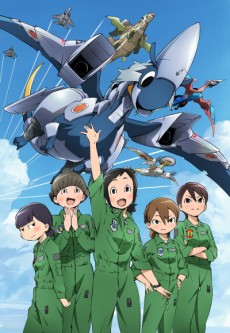 ANIME ActionHisone to Maso-tan
ANIME ActionHisone to Maso-tan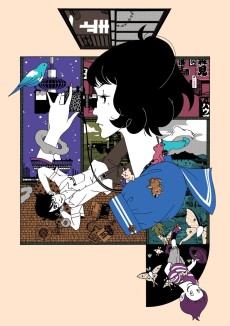 ANIME ComedyYojouhan Shinwa Taikei
ANIME ComedyYojouhan Shinwa Taikei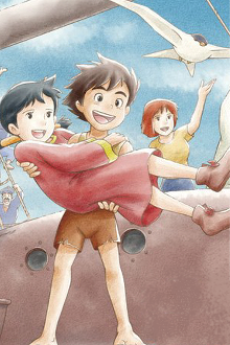 ANIME AdventureMirai Shounen Conan
ANIME AdventureMirai Shounen Conan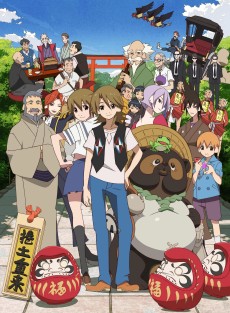 ANIME ComedyUchouten Kazoku
ANIME ComedyUchouten Kazoku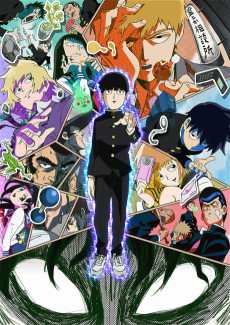 ANIME ActionMob Psycho 100
ANIME ActionMob Psycho 100
SCORE
- (4/5)
TRAILER
MORE INFO
Ended inMarch 23, 2020
Main Studio Science SARU
Trending Level 4
Favorited by 3,480 Users
Hashtag #映像研 #EIZOUKEN_ANIME


